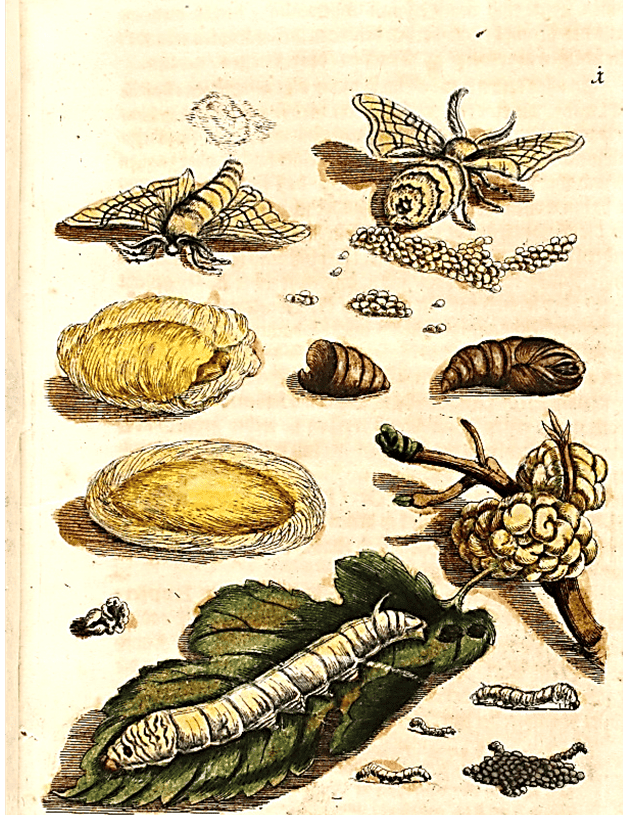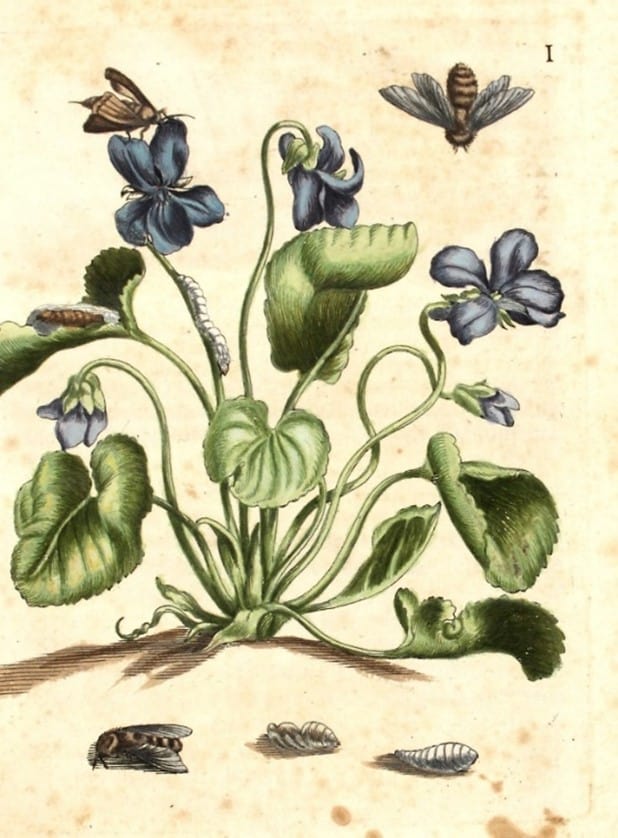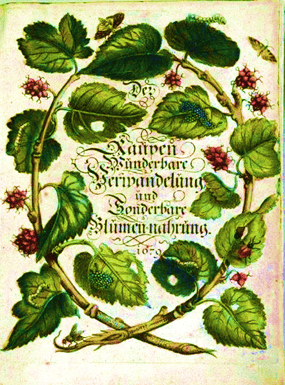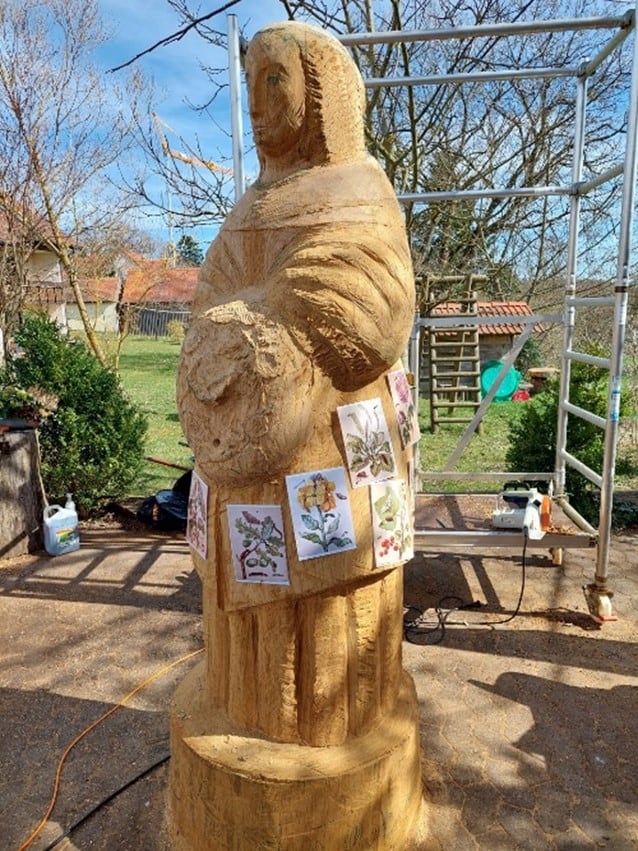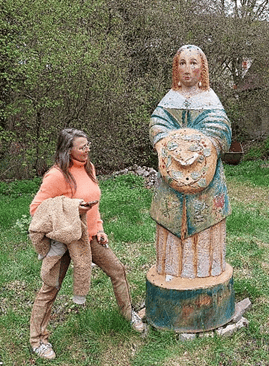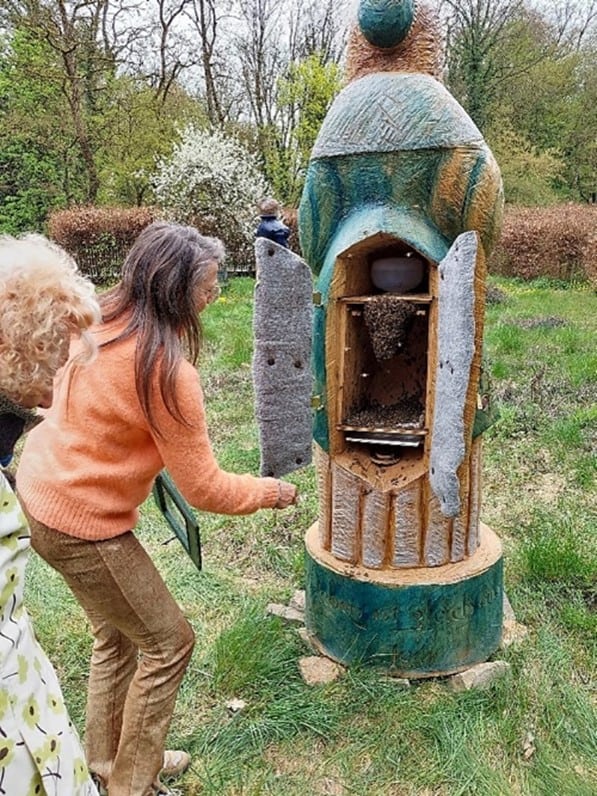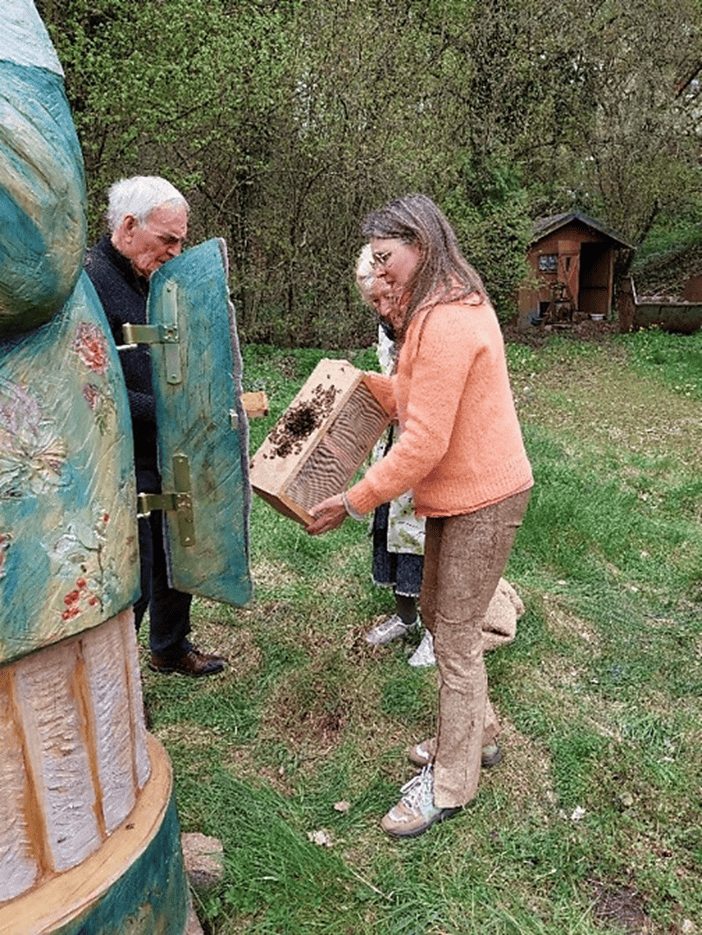MEMORIAL CULTURE AND HOME FOR A COLONY OF BEES
In addition to the three previous places of remembrance for Maria Sibylla Merian in Nuremberg's Old Town, namely the garden on the Kaiserburg, the former family house at Bergstr. 10 and the Merian Riverside Walk, the Nuremberg wood-carver Birgit Maria Jönsson has created a sculpture that not only represents Merian as depicted in her portrait of 1679, but also pays tribute to her work in Nuremberg.
When Merian lived in Nuremberg 350 years ago, she published her first books with her Nuremberg husband Johann Andreas Graff as the publisher: in three "Flower Books" she presented copperplate etchings of flowering plants which were true to nature and which she coloured by her own hand when so requested by customers.
In her two "Caterpillar Books" she went on one step further and combined images of many insect species with their natural habitat. She depicted their development with the preliminary stages such as eggs, caterpillars and pupae together with their "host plants". These are also called "food plants" because the hungry little guests are only viable in conjunction with their respective, specific plant species.
She began the cycle of her copperplate etchings in the first Caterpillar Book with the silkworm on a leaf of a small twig of the mulberry tree, because the long thread when it pupates (see the cover with the yellow kernel on the left) is used as the raw material for silk production. In the second Caterpillar Book she showed the development of the bee and a common violet because this is one of the first flowering plants in spring from which bees can harvest the honey that the beekeeper can later extract by centrifuge from the combs.
The description in her book, which is always just as important as the image, is a particularly good example of how Merian does not divide insects into useful and harmful. She was convinced that the Lord had created a perfect world and she observed all these little "creatures" with the same attention. Below the plant she has etched into the copper plate the bee’s stages of development and on the upper right the bee in flight. However, on the left half of the "Blue Mertzenveil" [common blue violet] she shows the development of the "Zeitelmade" [a type of maggot], which can destroy an entire colony of bees if several of them penetrate a hive. In a long paragraph she describes this process in detail and objectively, but without negative evaluation or advice on how to combat it.
The wood sculptor Birgit Maria Jönsson picked up on this special tribute by Merian by carving a Merian sculpture which is also a "beehive" from the trunk of an approximately 85-year-old oak tree that had to be removed to make way for a construction project. At the same time, it is a reminder of a former Nuremberg tradition whereby the “Zeidler” [beekeepers] were allowed to hollow out (dead) trees in the “Reichswald” (the city’s own forest) so that bee colonies could settle in them.
These beekeepers were responsible for escorting important personalities to and from Nuremberg because of their local knowledge in the thick of the forest and were therefore granted a special privilege allowing them to harvest the honey as a quid pro quo = again a new bridge for us both to Nuremberg's past, when Merian lived in Nuremberg, as well as to her own field of research!
In the photo on the right, copied sheets from her Caterpillar Books are pinned to the as-yet unfinished sculpture. In the meantime, Birgit Maria Jönsson has carved eleven motifs from Merian's copperplate etchings into the wood and has coloured them. On the front, the sculptress shows the mulberry wreath from the title copperplate in the First Caterpillar Book. The small but important entrance hole for the bees can be seen in the lower part of the wreath. We like these twelve pictorial quotations very much.
On the pedestal Merian herself has her say with her album leaf from 1675:
"The life of a human being is like a flower".
At the end of April 2023 the statue was set up in the nature garden called the "Himmelsgarten" (Heaven’s Garden) at Grünsberg Castle near Altdorf, i.e., on the former territory of the Imperial City of Nuremberg. The colony of bees that was introduced into the hollowed-out trunk of the oak tree has apparently settled in well despite the last cool days of April. So far we have not found any funding for this sculpture, i.e., Birgit Maria Jönsson has worked without a fee. We also do not yet know whether this special "Merian Monument" may find its final home in Nuremberg, e.g., in the future fourth Hesperides Garden in the historic district of St. Johannis.
A later location in Nuremberg is still up in the air. Again, a fitting quotation by Merian is found in her letter from Amsterdam to Nuremberg in 1704, written to her customer, the physician and book collector J. G. Volkamer: "... but patience is a good little herb". „… aber patiencya ist ein gut kreutlein“.
In the meantime, it is, symbolically, a good omen for us that the descendants of the Nuremberg patrician family Stromer von Reichenbach are granting the Merian beehive such a wonderfully appropriate "asylum" = When Merian lived in Nuremberg, she was even allowed to search for her caterpillars and insects in the Baroque gardens of broad sections of Nuremberg's bourgeoisie (not only among the upper classes).
The "Heavenly Garden" is easy to find on the opposite side of the road from Grünsberg Castle. Saint Sebald, also a " beehive " by Birgit Maria Jönsson, stands on the left next to the hedge behind the garden fence. He is apparently waiting to find its final resting place in the churchyard around the Sebaldus Church in Nuremberg after the latter has been redesigned. In the middle of the lawn stands a sculpture of Maria Montessori with her colony of bees. In accordance with the fashion of the time, she wears a long, deep-blue dress. The oak leaves embroidered on the top part of the dress (seen in a historic photo) are here carved into the wood and painted a luminescent white. The Merian sculpture can be seen in the background in front of the edge of the forest.
Grünsberg Castle is situated within a network of attractive hiking trails in the "Altdorfer Land" and the magnificent, professionally and lavishly restored "Sophienquelle" spring with its refreshing rushing water is only a few minutes away from the castle grounds.
The area is a worthwhile destination for several reasons, especially because of the castle fair, which up to now has taken place annually on the last Saturday in the Whitsun holidays, as well as other interesting cultural events at the (otherwise privately used) castle (to be found at: www.stromerstiftung.de + click on "Veranstaltungen").
Visiting Merian in the countryside in a short video by the sculptress
How to get to Grünsberg Castle
Routes to Grünsberg Castle east of Nuremberg with its surrounding area
Copied with kind permission from the website of the ”Stromer'sche Kulturgut-, Denkmal- & Naturstiftung” (non-profit family foundation for the Preservation of Cultural Property, Monuments & Nature), responsible for administering the estate of the castle
Four additional maps from this website of the Stromer Foundation with detailed information about cycle paths and footpaths, the nearest railway station, other sights in the vicinity, as well as an aerial view of Grünsberg Castle can be found here .



